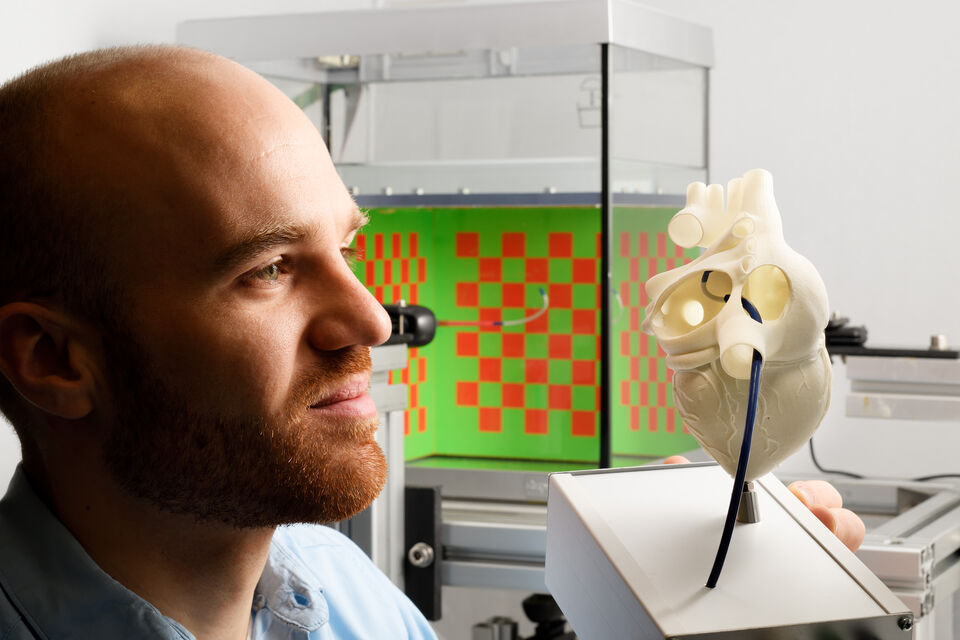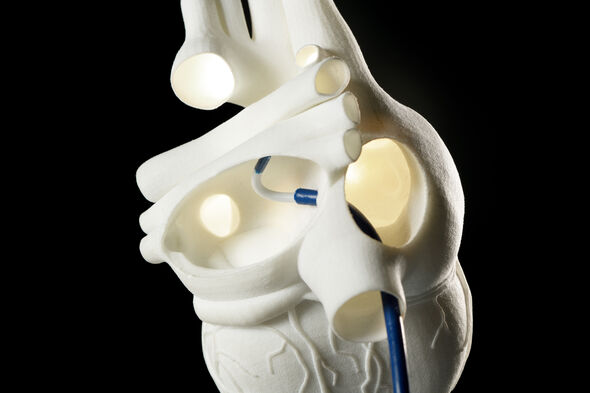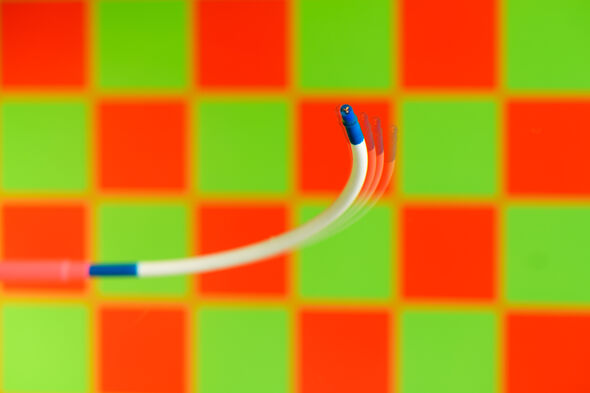Home Stretch | Smartly steered catheters
Open-heart operations take their toll on the patient and are high risk. If at all possible, minimally invasive procedures, such as catheterizations, are preferred. This inspired Rolf Gaasbeek, as a PhD candidate, to work on a catheter incorporating a shape-memory alloy that can be controlled by the surgeon, and which over time may even become self-guiding with the help of X-rays.
Increasingly, procedures on the heart now involve catheterization, whereby a slender hollow tube is inserted, via the groin or wrist, along a vein until it reaches the heart. This provides a way of resolving constrictions in blood vessels in the heart area by inflating a balloon of sorts (angioplasty) and afterwards, in some cases, inserting a tube (a stent) to keep the artery or vein open.
Catheters are also used for what is known as an ablation procedure, which involves deliberately damaging some of the heart tissue by applying heat in order to resolve heart rhythm disorders. To do this, the physician must be able take the tip of the catheter along a guided tour of sorts of the inner wall of, say, a heart chamber, explains Rolf Gaasbeek. “At present, the guidance is provided by pulling on wires that run the length of the catheter. This is no easy task, and so an ablation operation may take several hours.”
Harmful radiation
To ensure that the surgeon can see what he or she is doing, fresh X-rays are taken all the time, but this means the surgeon is continually being exposed to harmful radiation. According to Gaasbeek, heart surgeons are consequently three times as likely to get cancer as the rest of us. “It would be much healthier for them if they could operate the catheter from a distance, but with all the pulling on wires involved in the current method, that's very difficult to arrange.”
More below illustration
This is why, for his doctorate, Gaasbeek worked on an electrically operated catheter that relies on what is known as a shape-memory alloy. “This is a material whose crystalline structure changes when you heat it up by passing an electrical current through it. This causes the shape-memory alloy to contract, but if you let it cool down, it resumes its original form. Hence the name 'shape-memory'.”
The shape-memory alloy capable of stretching the farthest and offering the largest force is an alloy of nickel and titanium, explains Gaasbeek. “This shape-memory alloy is already being used for stents, which can be inserted crumpled and after having been cooled can stretch to form a strong tube, and for other applications that require only these two particular states.” The shape-memory alloy is trickier, however, to use as an actuator; here, by contrast, the form must change gradually and in a controlled way. It was Gaasbeek's job, as an expert in the field of control technology, to come up with a solution.
Memory wires
The brand new doctor – he gained his doctorate on April 4 – managed to make a catheter whose tip could make the movements required in an ablation operation. To achieve this, he inserted into the wall surrounding the catheter's hollow core – lengthwise, of course – equidistant from each other, three memory wires, each of which was connected independently to a power supply.
More below illustration
By cleverly varying the current through each of the wires, he can manipulate the shape-memory material so that within a few seconds the tip of the catheter performs the required movement. In theory, the wire can even turn back on itself, like a snake looking backwards; a flexibility that is needed for the ablation operation for which it is intended. In time, it may be possible to connect the electrical control to the X-rays, so that the catheter can perform its work largely autonomously.
In addition, by knowing the electrical resistance measured in the wires, it is possible to deduce what forces are acting on them, explains Gaasbeek. “This means you can feel indirectly whether the tip is making contact with the tissue.” This is vital information for the surgeon, he points out. “Ultimately, I expect that thanks to this technology, doctors will be able to carry out the same operations with less training, and that open-heart surgery will be the necessary option in fewer and fewer cases.”
Robotic technology
Like the project carried out by his colleague Jordan Bos (recently featured in Home Stretch), Rolf Gaasbeek's doctoral work is also contributing to the development of surgery e-robots. This is happening in the TU/e-spin-off Eindhoven Medical Robotics, the vehicle by which Gaasbeek's PhD supervisor, university professor Maarten Steinbuch, wants to get at least a thousand people in the region working in the field of medical robot technology within ten years.
Main photo: Bart van Overbeeke




Discussion